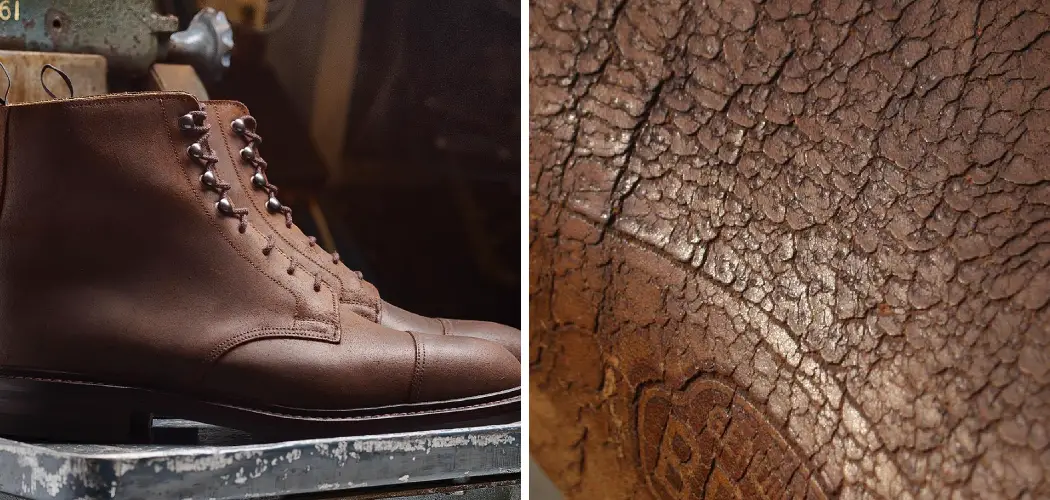Leather is a timeless material that enhances any outfit, handbag, or shoe with its elegance and durability. However, sometimes, you may want to add a touch of rustic charm to your leather pieces by giving them a roughed-up look. In this comprehensive guide, we’ll walk you through how to rough up leather and achieve the desired vintage effect without damaging your leather goods.

Can You Rough up Leather?
Leather is a versatile material known for its toughness and durability. Many people ask whether leather can be roughed up to give it an edgier look, and the answer is yes! In fact, roughing up leather can add character and a distinctive appeal to leather products like jackets, boots, and bags.
However, it’s important to remember that not all types of leather can be roughed up and that improper techniques can damage or ruin the leather. So, if you’re thinking of trying this technique on your leather goods, it’s always best to do a bit of research and consult with an expert before taking the plunge.
Why Should You Rough up Leather?
Leather is known for its durability and strength, but did you know that roughing it up can actually make it even tougher? When leather is roughed up, its fibers become intertwined and make the material more resistant to wear and tear.
Additionally, roughing up leather can also give it a unique and appealing texture, adding character to your favorite leather goods. Whether you’re a fan of rugged, worn-in leather or just want to protect your investment, giving it a little roughness is a worthwhile endeavor. So grab some sandpaper or a wire brush and rough up your leather – your wallet, shoes, and jackets will thank you for it!
How to Rough up Leather: A Comprehensive Guide
1. Determine the Type of Leather
Before you start roughing up your leather, you need to know what type of leather you’re working with. Some leather types, such as suede, require less effort to rough up, while others, like full-grain leather, require more effort.
Knowing the type of leather is vital because it helps you know how much roughing up your leather can take. Be sure to use a rough-grit sandpaper or a leather distressing tool for full-grain leather.
2. Prepare the Leather
To rough up your leather, you need first to prepare it. Begin by cleaning the leather with a leather cleaner, soap and water, and a soft cloth. Remove any dirt, grime, or stains on the surface. Allow the leather to dry thoroughly before moving to the next step.
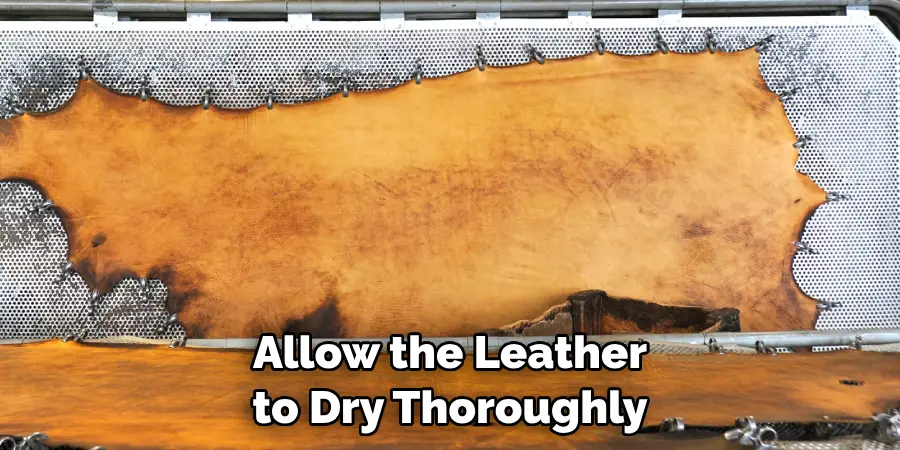
3. Rough up The Leather
The next step is the actual roughing up of the leather. Here, you can use a sandpaper block, emery board, or a specialized leather distressing tool. Rub the sandpaper or emery board back and forth along the surface of your leather piece, using varying degrees of pressure to create a random pattern of scratches and scuff marks. Do not apply too much pressure, as it may damage your leather.
4. Add a Finishing Touch
Now that you’ve successfully roughed up your leather, you can take it one step further by applying a finishing touch. You can add a leather conditioner or oil to protect the leather and give it a smoother texture. Alternatively, you can use a leather dye or antiquing gel to make your roughed-up leather piece look even more vintage.
5. Let it Dry
After applying the finishing touch, let your leather piece dry completely. This step is crucial as it lets the leather absorb the conditioner or dye properly. It also ensures that the finish sets and does not rub off easily.
6. Test for Desired Effect
Once your leather has dried, test its appearance and texture to see if it meets your expectations. If you want more of a distressed look, you can repeat the roughing-up process until you achieve your desired effect.
7. Enjoy Your Roughed-Up Leather Piece!
Congratulations! You’ve successfully learned how to rough up leather. Now, you can use this technique on any leather item you own, from jackets and bags to furniture and accessories. Experiment with different tools and techniques to achieve unique and personalized results.
5 Considerations Things When You Need to Rough up Leather
1. Type of Leather
When you are looking to rough up leather, it is important to consider the type of leather you are working with. Different types of leather require different methods for roughening and may require different materials or tools.
For example, full-grain and top-grain leather can be roughened with sandpaper, while suede requires a special brush. Knowing which type of leather you have will help you determine the best way to roughen it.
2. Condition of Leather
The condition of the leather is also an important factor to consider when trying to rough it up. If the leather is in good condition, then it should be relatively easy to rough up; however, if the leather is damaged or worn, then more care must be taken when roughening it so as not to cause further damage.
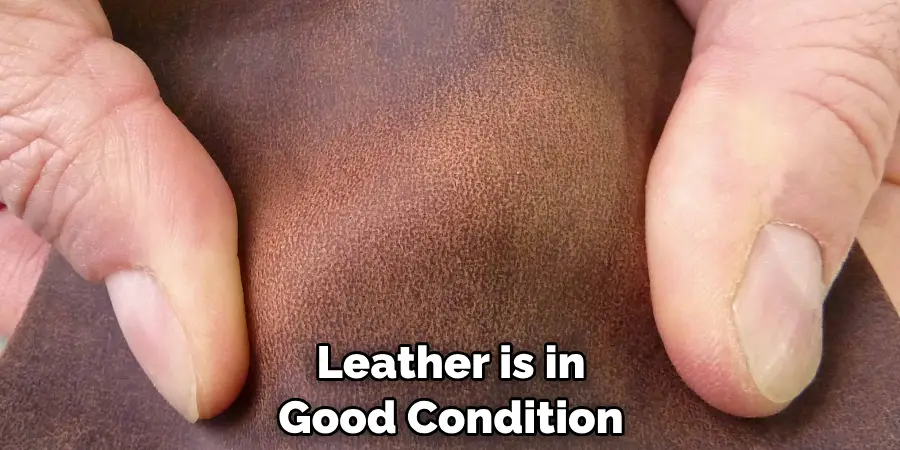
Additionally, if the leather has been treated with any chemicals or dyes, then these must be taken into account when choosing a method for roughening it.
3. Purpose
It is also important to consider why you need to rough up the leather to determine which method would be best suited for your needs. If you are trying to create a distressed look, then sandpaper may be a good option; however, if you are looking for a smoother finish, then using a wire brush may be more appropriate.
Additionally, some methods may take longer than others, depending on how much texture you want to achieve.
4. Tools/Materials Needed
When attempting to rough up leather, it is important to make sure that you have all of the necessary tools and materials on hand before beginning the process.
Depending on your chosen method, this could include sandpaper in various grits, steel wool pads, wire brushes, and even specialty tools such as burnishing blocks and pumice stones. Having all of these items ready will save time and ensure that your project goes smoothly.
5. Protective Gear
Finally, when attempting any sort of project involving leather, it is important to wear protective gear such as gloves and safety glasses to protect yourself from any potential hazards associated with working with the material (e.g., sharp edges).
Additionally, having a dust mask available can help prevent inhalation of any particles created during the roughening process, which could potentially cause irritation or allergic reactions.
5 Benefits of Rough up Leather
1. Durability
Roughing up leather is a great way to increase the durability of your leather products. By roughening up the surface of the leather, it becomes more resistant to scratches and other damage that can occur over time. Additionally, roughing up the leather allows it to better absorb waxes and oils that can help to protect it from further damage.
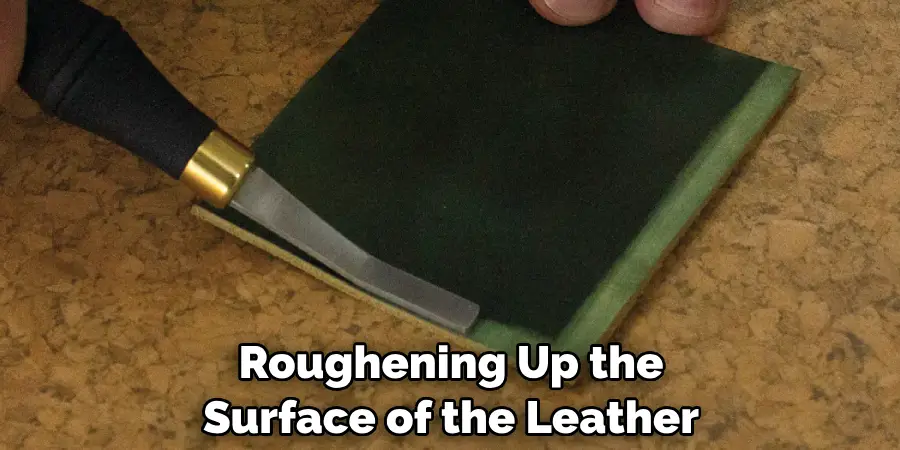
2. Increased Grip
Roughing up leather can also be beneficial if you want an increased grip on a product such as a belt or a pair of shoes. The roughened surface provides more friction than smooth leather, making it easier to hold onto items without them slipping out of your hands. This is especially useful for items such as gun holsters or belts where having an increased grip is essential.
3. Improved Aesthetics
Roughing up leather can also improve its overall aesthetics. By creating an uneven texture on the surface of the leather it gives it more character and makes it look more interesting than smooth leather products. This is especially true if you use dyes or stains to create unique patterns on the leather after you have roughened it up.
4. Easier Cleaning
Roughing up leather can also make it easier to clean since dirt and debris will not get stuck in crevices like they would with smooth leather surfaces. Additionally, cleaning products can penetrate deeper into the roughened surface of the leather, making them more effective at removing dirt and grime from your products.
5. Cost-Effective
Finally, roughing up leather is also cost-effective since you don’t need any special tools or equipment to do so; all you need is sandpaper or steel wool and some elbow grease! Additionally, roughing up your own products can save you money since there are no additional costs involved with outsourcing this task to someone else.
Some Common Mistakes People Make When Trying to Rough up Leather
Leather is a beautiful material that is both durable and timeless. When trying to create a rugged look, people often make the mistake of using harsh chemicals or sandpaper to rough up the surface.
However, these methods can actually damage the leather and cause it to lose its natural characteristics. Instead, it’s important to use a gentle touch and focus on adding subtle accents, such as burnishing or distressing around the edges.
By taking the time to carefully rough up the leather, you can achieve a unique and authentic look that will only get better with age. Remember, less is often more when it comes to leather, so take your time and let the natural beauty of the material shine through.
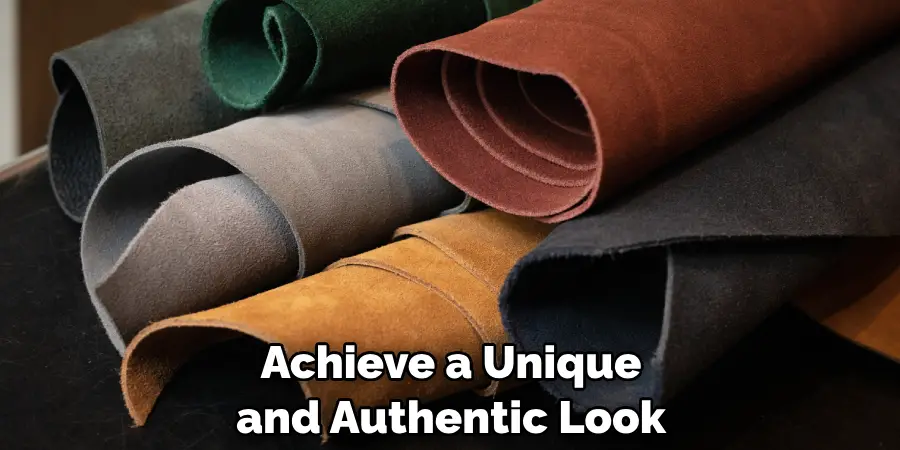
Conclusion
Roughing up leather is an excellent way to give your leather pieces a vintage and rustic touch. Whether you’re looking to achieve an edgy look a cowboy vibe, or just want to add some character to your accessories, roughing up your leather is an inexpensive and enjoyable way to do it.
But please remember: take it slow, use the right tools, and experiment to find the perfect balance of roughness. Thanks for reading our post about how to rough up leather.

